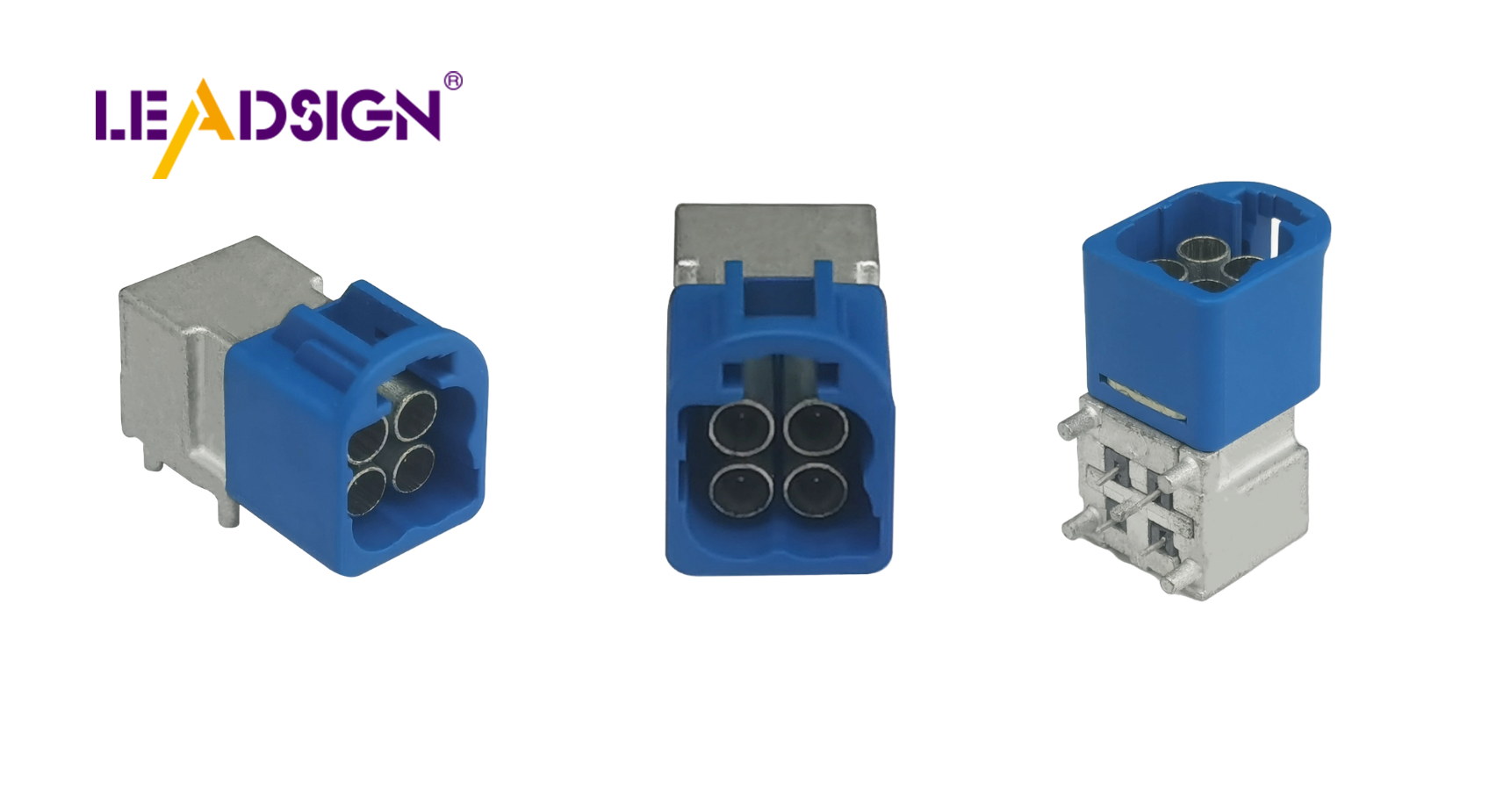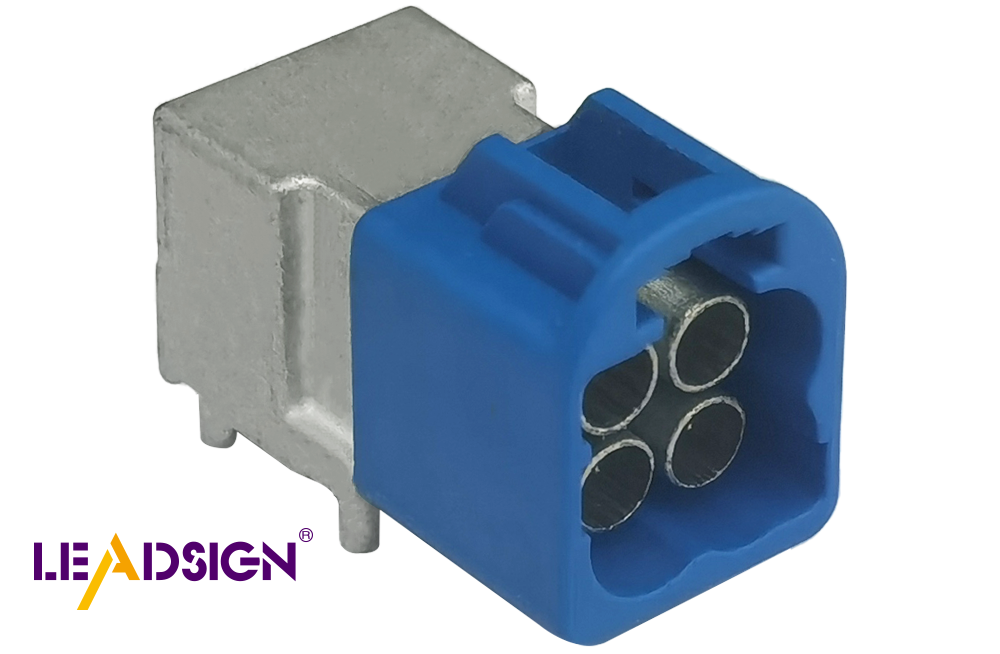A Guide to Automotive Wiring Connector Types and Applications

Finding the right car wiring connectors is important, especially when considering the various automotive electrical connectors types available. It keeps cars safe and working well. Different connectors can look confusing because they have many designs and uses. Using the correct connectors helps cars work better. They are important for safety systems like airbags and ABS brakes. Good electrical connections keep these parts working safely. As technology gets better, we need better connectors too. This shows how important they are in today's cars.
Overview of Car Wiring Connectors
Knowing car wiring connectors is important for fixing cars. These connectors help your car's electrical parts work well. Let's look at different connector types and what they do.
Types of Car Electrical Connectors
Blade Connectors
Blade connectors are common in cars. They have a flat metal piece that fits into a slot. You see them in fuse boxes where strong connections matter. They are easy to use because you can put them in and take them out easily.
Pin Connectors
Pin connectors are also used a lot in cars. They have a pin that goes into a socket, making a strong link. People like them because they last long and are simple to use. You find them in engines and sound systems.
Butt Connectors
Butt connectors join two wires together. They look like tubes and need crimping to hold tight. These are good for fixing things, keeping wires connected even if the car shakes or moves.
Ring and Spade Terminals
Ring and spade terminals connect wires to screws or bolts. The ring makes a circle, while the spade looks like a fork with an open end. They are great for grounding wires or connecting battery ends.
General Uses
Connecting Electrical Systems
Car wiring connectors link different electrical parts inside a vehicle. They make sure power moves smoothly from the battery to things like lights and the ignition system.
Sensor Links
Connectors join sensors to control units in cars. This helps send data so car systems work right. Good connectors keep these links stable, even when it’s tough outside.
Lights and Signals
Lights need good wiring connectors too, so headlights and signals work well without flickering or dimming.
Detailed Descriptions of Connector Types

Knowing the different automotive electrical connectors is important for fixing car wires. Each type is special and used in different ways, so it's key to know them well.
Blade Connectors
Physical Characteristics
Blade connectors have a flat metal piece that fits into a slot. This makes sure they connect well, which is important for keeping car systems working right.
Common Applications
You often see blade connectors in fuse boxes where strong connections are needed. They are easy to use, so both mechanics and people who fix cars at home like them.
Identification Tips
To spot blade connectors, look for their flat metal piece. They usually have colors to match with the right slot. Always make sure they fit tight to avoid problems.
Pin Connectors
Physical Characteristics
Pin connectors have a pin that goes into a socket, making a strong link. People like this design because it lasts long and is easy to use in many car parts.
Common Applications
Pin connectors are common in engines and sound systems. They work well where steady performance matters most.
Identification Tips
To find pin connectors, look for the pin and socket setup. They come in different sizes, so pick the right one for your job.
Butt Connectors
Physical Characteristics
Butt connectors look like small tubes and need crimping to hold wires tight. This makes them strong against shaking, which is important in cars.
Common Applications
Use butt connectors when joining two wires together. They're great for repairs because they keep connections firm even if things move or shake.
Identification Tips
To recognize butt connectors, check their tube shape. You need a crimping tool to put them on right, so having the right tools helps make good connections.
Ring and Spade Terminals
Physical Characteristics
Ring and spade terminals are special because of their shapes. The ring terminal is a full circle. The spade terminal looks like a fork with an open end. These shapes help them attach to screws or bolts easily. They are made from copper or brass, which are strong and conduct electricity well. The insulation around them stops short circuits, making them safe for cars.
Common Applications
You often see ring and spade terminals in cars, especially for grounding wires or battery connections. Their design makes them great for strong connections. For example, use ring terminals to connect wires to the car's body for grounding. Use spade terminals to connect wires to switches or relays. They are easy to put on and take off, so both mechanics and people fixing their own cars like them.
Identification Tips
Finding ring and spade terminals is easy by their shapes: a circle for rings and a fork shape for spades. Check the size of the opening; it should fit your screw or bolt. Look at the insulation color; it shows what wire size fits best. With the right tools, you can make sure they fit well.
Automotive Engineer: "Crimp connectors are used because they work well and are easy to install. They hold tight by squeezing around the wire."
This shows why using the right connectors like ring and spade is important for keeping your car's electrical system working safely.
Helpful Tips for Finding and Using Connectors
Understanding car electrical connectors can be tough. But with the right tools and knowledge, you can find and use them easily. Here are some helpful tips.
Tools to Help You
To find the right car electrical connectors, you need good tools. These help make sure you use the correct connector.
Multimeters
A multimeter is a must-have tool. It checks voltage, current, and resistance. This helps see if your connections work well. A multimeter quickly spots bad connectors or wiring problems. It's great for keeping your car's electrical systems working right.
Connector Guides
Connector guides are useful too. They give details about different car connectors, like how they look and where they're used. By using these guides, you match connectors to parts easily. This helps avoid mistakes by using the right connector every time.
Mistakes to Watch For
When working with car electrical connectors, avoid common mistakes that cause trouble later on.
Mixing Up Connector Types
Mixing up connector types is a big mistake. There are many kinds of car connectors, so it's easy to get confused. Always check the connector's details and use guides to be sure. Getting it wrong can lead to bad connections and failures.
Wrong Installation Methods
Wrong installation methods weaken your connections. For example, not crimping a spade terminal properly makes it weak. Spade terminals have a fork-like shape for easy use. Use the right tools and ways for each type of connector. Good installation keeps connections strong.
Tip: "Crimp connectors hold tight because they squeeze around wires."
By following these tips, you can find and use car electrical connectors confidently. This keeps your vehicle's electrical systems safe and working well.
Finding and using the right car connectors is very important. They help keep your car safe and working well. You learned about different connector types and what they do. Knowing them helps your car's electric parts work smoothly. Good connectors are important for keeping cars safe, as experts say. Use helpful tips to not mix up connectors. This keeps connections strong and stops problems from happening. Remember these ideas to make sure your car stays reliable and works great.
See Also
Understanding Ford Fakra Connectors: A Complete Overview
An In-Depth Look at HSD Connectors Explained
Fundamentals of HSD Connectors for Automotive Use

